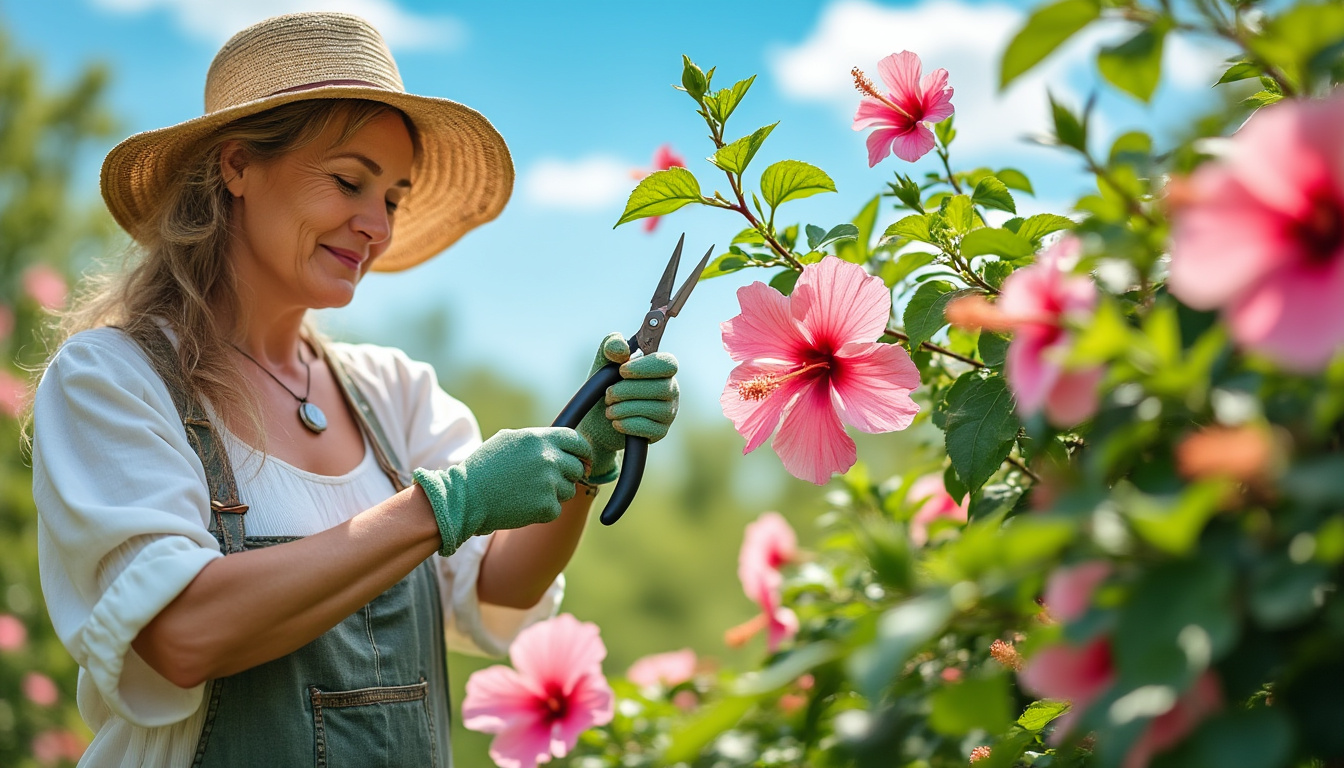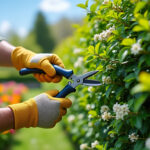Understanding the optimal timing for pruning hibiscus plants can transform a garden space into a vibrant display of color and life. Proper pruning enhances plant health and ensures an abundance of gorgeous blooms throughout the growing season. This article delves into the best practices for hibiscus pruning, helping gardeners optimize their efforts for stunning floral displays.
- Optimal Timing for Pruning
- Types of Pruning Techniques
- Tools and Preparation
- Post-Pruning Care
- Common FAQs about Hibiscus Pruning
Optimal Timing for Pruning Hibiscus Plants
Pruning hibiscus is not just a seasonal chore; it is a vital practice that can dramatically affect the plant’s growth and flowering patterns. The timing of when to prune hibiscus varies slightly based on the specific variety, such as tropical hibiscus versus hardy hibiscus. For many gardeners, recognizing the right window to prune can lead to more vigorous growth and vibrant blooms.
Typically, the best time to prune hibiscus plants is in early spring. This period is significant as it aligns with the onset of the growing season. At this time, plants are still dormant, meaning that heavy pruning will not hinder their growth. Moreover, pruning just before new growth begins allows the plant to recover quickly and put energy into producing new shoots and flowers.
In areas with milder climates, late winter may also be a suitable time to perform substantial pruning. However, it is crucial to ensure that the danger of frost has passed in these particular climates. For instance, areas in USDA hardiness zones 9-12 may experience mild winters, providing an excellent opportunity for pruning in late winter.
For regions that deal with occasional frost, pruning should be conducted after the last frost has occurred, significantly boosting healthy recovery for the plants. In cases where plants are left unpruned, they may become overgrown and leggy, reducing their flowering ability. Thus, seasonal timing for pruning becomes pivotal in maintaining health and aesthetics.
| Season | Ideal Pruning Action | Notes |
|---|---|---|
| Late Winter | Hard Pruning | Before new growth starts, suitable for warmer zones. |
| Early Spring | Formative Pruning | Encourage new growth with clean cuts. |
| Late Spring to Mid-Summer | Light Trimming | Used to correct growth without stress. |
Consideration of Regional Climate
The diverse climates across regions considerably influence the timing for hibiscus pruning. For instance, tropical hibiscus, common in warm areas, can often handle aggressive pruning compared to hardy varieties that might thrive better with minimal trimming. It is essential for gardeners to understand their specific climate and the accompanying behavior of their hibiscus plants.
In warming climates, minor pruning can also be beneficial throughout the summer to encourage bushier growth and an increase in blooms. Pinching back the tips of young plants stimulates branching, resulting in fuller plants with more flowers. This technique is commonly referred to as tipping and ensures a delightful arrangement of blossoms during peak bloom periods.
Types of Pruning Techniques for Hibiscus Plants
Understanding various pruning techniques is essential for achieving desired outcomes in hibiscus health and appearance. Different approaches yield varying effects and influence how the plant will bloom.
- Hard Pruning
- Formative Pruning
- Selective Pruning
- Maintenance Pruning
Hard Pruning
For hibiscus plants that have become leggy or overgrown, hard pruning can reinvigorate them remarkably. This technique entails cutting the plant back to approximately one foot from the ground, allowing new growth to flourish when warmer months arrive. This rejuvenation approach is especially crucial for older hibiscus shrubs that may not have bloomed optimally in recent seasons. By taking a step back in terms of growth, the resulting new branches will be fresh, strong, and loaded with potential blooms.
Formative Pruning
Formative pruning encourages structural development for younger plants. In this method, the main objective is to shape the plant and control its overall form. By selectively removing certain branches and encouraging lateral growth, this technique enhances the overall symmetry and bushiness of the hibiscus. For instance, cut back one-third of the previous year’s growth after the last frost, promoting a dense & healthy plant.
Selective Pruning
Selective pruning allows gardeners to maintain specific branches while promoting overall health. Removing only minor dead or overlapping branches enhances light penetration, aiding in growth balance. This approach is incredibly effective for stimulating branching while minimally impacting the plant’s blooming capabilities.
| Pruning Type | Purpose | When to Apply |
|---|---|---|
| Hard Pruning | Rejuvenate old, leggy plants | Early Spring |
| Formative Pruning | Shape young plants for growth | Spring |
| Selective Pruning | Maintain structure and health | Year-Round (as needed) |
Tools and Preparation for Pruning Hibiscus
Before embarking on pruning tasks, preparation can significantly ease the experience. Selecting the right tools not only ensures better results but also promotes safety during the process. A well-organized pruning session makes for a productive gardening day.
Essential pruning tools include:
- Bypass Pruners: Recommended for clean cuts on small branches.
- Hand Saw: Suitable for thicker branches.
- Gardening Gloves: Protect against injuries.
- Safety Goggles: Shield eyes from debris.
Before use, it is important to ensure all tools are sanitized with rubbing alcohol to prevent spreading any diseases. A sharp pair of pruners is crucial, as dull tools can create ragged cuts that can lead to infections in plants.
Preparing the Plant
Prior to pruning, inspect the hibiscus for any dead or diseased branches. This preliminary step allows for the removal of unhealthy sections before addressing shape and form. It is essential to prune above a healthy leaf node to stimulate new growth effectively after pruning.
Make clean cuts at a slight angle about a quarter-inch above the node to promote healthy regeneration. During the actual pruning process, it is advisable to never cut more than one-third of the plant to avoid stress.
| Tool | Purpose | Preparation Notes |
|---|---|---|
| Bypass Pruners | Make clean cuts on small branches | Sanitize before use |
| Hand Saw | Cut through thicker branches | Ensure sharp blade |
| Gardening Gloves | Protect hands | Wear for safety |
| Safety Goggles | Protect eyes from debris | Always wear during pruning |
Post-Pruning Care for Hibiscus Plants
Once pruning has been successfully completed, nurturing the hibiscus back to its prime is essential. Nutrients, water management, and general plant care play significant roles in helping the plant recover and thrive.
After performing any form of pruning:
- Water the Plant: Ensure sufficient moisture to reduce stress.
- Apply Fertilizer: Use a balanced fertilizer formulated for hibiscus.
- Mulch the Base: Enhance moisture retention and regulate soil temperature.
Drawing on nutrient-rich fertilizers such as Miracle-Gro helps replenish vital resources that the plant needs post-pruning. Additionally, monitoring soil moisture levels aids in sustaining hydrating conditions for optimal growth. In zones prone to heat, mulching around the base acts as an insulator, keeping roots cool during warmer months.
In the coming weeks, keep a watchful eye for any new growth. Maintaining a consistent watering schedule promotes recovery and vigor. Observe for any pest activity, as healthy plants can still be susceptible to insects.
| Post-Pruning Care Action | Purpose | Timing |
|---|---|---|
| Water the Plant | Reduce stress after cuts | Immediately after pruning |
| Apply Fertilizer | Support recovery and growth | Within a week of pruning |
| Mulch the Base | Retain moisture | After pruning |
When to plant out courgettes for a thriving garden
Common FAQs about Hibiscus Pruning
- What is the best time to prune a hibiscus?
The best time is early spring after the danger of frost has passed. - Can I prune my hibiscus in summer?
Summer pruning can stress the plant; however, minor trims or pinching can encourage growth. - How much should I prune at once?
Never prune more than one-third of the plant to prevent stress and promote vigor. - What tools do I need for pruning hibiscus?
A pair of sharp bypass pruners, a hand saw for larger branches, protective gloves, and goggles are ideal.
In conclusion, proper pruning techniques foster the strength of hibiscus plants and yield vibrant blooms, enhancing outdoor spaces with their stunning display. Incorporating knowledge of timing, techniques, tools, and post-pruning care will elevate any gardener’s experience, leading to a flourishing, colorful garden.















